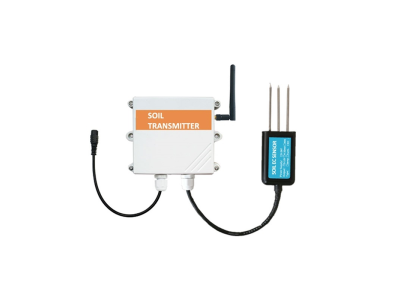Agriculture is a cornerstone of our global economy and plays a vital role in feeding the world's population. However, the traditional methods of farming are facing increasing challenges due to factors such as climate change, dwindling resources, and the need for sustainable practices. In this context, soil sensors are emerging as a revolutionary technology that can transform the way we approach agriculture. By harnessing the power of soil sensors, farmers can optimize their practices, increase productivity, and minimize environmental impacts.

Understanding Soil Sensors:
Soil sensors are devices that measure and monitor various parameters of soil health, including moisture content, temperature, pH levels, nutrient levels, and more. These sensors provide real-time data, enabling farmers to make informed decisions about irrigation, fertilization, and other critical aspects of soil management. By collecting accurate information on soil conditions, farmers can optimize resource use, reduce waste, and enhance crop yields.
Improving Agricultural Efficiency:
One of the primary advantages of soil sensors is their ability to enhance agricultural efficiency. Agriculture is a major contributor to greenhouse gas emissions, primarily through practices such as tillage and synthetic fertilizer usage. Soil sensors enable farmers to optimize irrigation and nutrient application, reducing water and fertilizer usage, consequently minimizing the carbon footprint. By providing precise information on soil moisture levels, sensors help farmers avoid excess watering and prevent waterlogging, ensuring efficient use of water resources.
Targeted Interventions for Enhanced Crop Yield:
Soil sensors offer farmers the ability to identify areas of their fields experiencing stress or nutrient deficiencies. By providing localized data, these sensors facilitate targeted interventions, enabling farmers to take appropriate actions to improve crop health. For instance, if a specific area of the field shows low nutrient levels, farmers can apply fertilizers specifically to that area, instead of uniformly across the entire field. This optimization reduces the overall fertilizer usage, thereby preventing over-application and minimizing environmental pollution.
Promoting Soil Carbon Sequestration:
Healthy soils play a crucial role in carbon sequestration, mitigating climate change. Soil sensors enable land managers to monitor soil health and take proactive measures to enhance its ability to sequester carbon. By monitoring factors such as organic matter content and nutrient levels, sensors help identify areas of soil degradation. Implementing practices such as cover cropping, organic amendments, and reduced tillage can enhance soil health and promote carbon sequestration.
Advancing Sustainable Agriculture:
Soil sensors are driving the adoption of sustainable agricultural practices. Farmers can integrate sensor data with precision agriculture techniques, optimizing resource use and minimizing environmental impacts. For instance, by using data on soil moisture levels, farmers can implement precision irrigation techniques like drip irrigation or sprinkler systems, ensuring water is delivered precisely where needed. This reduces water wastage, minimizes energy consumption, and lowers operating costs.
Enhancing Climate Resilience:
Climate change brings increased weather variability, making it crucial for farmers to adapt to changing conditions. Soil sensors aid in climate resilience by providing real-time insights into soil moisture levels and temperature. This information helps farmers anticipate droughts or excessive rainfall, enabling timely adaptations in irrigation and planting strategies. By making informed decisions based on accurate data, farmers can mitigate risks and minimize crop losses caused by extreme weather events.
Facilitating Data-driven Farming:
Soil sensors generate a wealth of data that can be used to optimize farming practices further. By integrating sensor data with other sources such as satellite imagery, weather forecasts, and historical records, farmers gain a holistic understanding of their fields. This comprehensive data-driven approach allows for precise decision-making, facilitating improved outcomes and overall farm management.
Conclusion:
Soil sensors are revolutionizing agriculture by providing real-time, localized data on soil health. By harnessing the power of these sensors, farmers can optimize and streamline their practices, leading to increased productivity, reduced resource usage, and minimized environmental impacts. Soil sensors are a vital tool in advancing sustainable agriculture and promoting climate resilience. As technology continues to advance, the potential for soil sensors to transform farming practices and contribute to a more sustainable future is immense. Embracing this technology is crucial for ensuring food security, environmental sustainability, and economic prosperity in the face of evolving global challenges.






